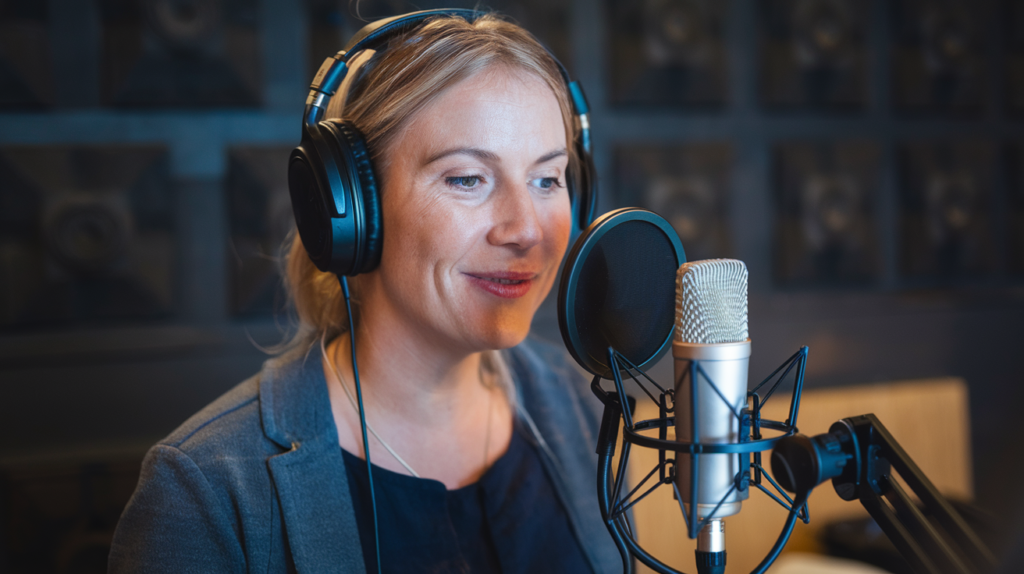Key Takeaways
- Unique Phonetics: Māori pronunciation includes distinct vowel combinations and consonant sounds that differ from English, making it imperative for voiceover artists to master these phonetic elements to avoid miscommunication.
- Cultural Sensitivity: Understanding the cultural significance of certain terms is crucial; mispronunciations can lead to unintentional offense or misrepresentation, highlighting the importance of respectful engagement with the language.
- Intonation and Rhythm: The melodic flow and rhythm of Māori sentences require adjustments in delivery style. Voice actors must adapt their pacing to capture emotional resonance effectively.
- Practice and Resources: Investing time in learning through phonetic guides, native speaker recordings, and engaging with community resources is essential for mastering Māori pronunciation.
- Learning from Examples: Analyzing both successful adaptations and notable mistakes in voiceovers provides valuable insights into managing challenges associated with Māori pronunciation effectively.
- Utilizing Technology: Leveraging technology such as audio recording software and language learning apps enhances practice efficiency, helping voice artists refine their skills in real-time.
Have you ever wondered why some voiceovers just don’t hit the mark? One major factor could be the challenges of Māori pronunciation. With its unique sounds and rhythms, Māori language can pose significant hurdles for voiceover artists unfamiliar with its nuances.
Overview of Maori Pronunciation
Māori pronunciation presents unique challenges for voiceover artists. The language features distinct sounds and rhythms that differ significantly from English, which can complicate the work of voice talent unfamiliar with its nuances.
The Māori language includes specific vowel combinations and consonant sounds not present in English. For example, the macron over vowels indicates lengthening, affecting meaning and pronunciation. Mispronouncing a word by omitting this aspect can alter its intent entirely. Voice actors must pay close attention to these details to ensure accuracy.
Additionally, some Māori words consist of multiple syllables or unusual stress patterns that may feel foreign to those accustomed to English phonetics. This unfamiliarity often leads to mispronunciations or awkward pacing in voiceovers.
Cultural context also plays a role in pronunciation. Certain terms may carry significant cultural weight, requiring sensitivity and understanding from voiceover talent. Ignoring these subtleties could result in an unintentional offense or misrepresentation.
Voiceover professionals should invest time in learning about Māori pronunciation through practice and resources like phonetic guides or native speaker recordings. Engaging with this rich linguistic tradition enhances authenticity, making the final product resonate more deeply with audiences familiar with the culture.
Mastering Māori pronunciation is essential for delivering high-quality voiceovers that respect both the language’s intricacies and its cultural significance.
Common Challenges in Voiceovers
Navigating Māori pronunciation presents distinct challenges for voiceover talent. Understanding these hurdles enhances the quality of your work and fosters respect for the language’s intricacies.
Phonetic Differences
Māori pronunciation features unique phonetic elements that differ from English. For instance, vowel combinations like “au” and “ei” produce sounds that may not exist in your native tongue. Additionally, certain consonants, such as the glottal stop represented by an apostrophe, often trip up voice artists unfamiliar with their usage. Mispronouncing these sounds can lead to unclear messages or even change meanings entirely. Therefore, investing time in mastering these phonetics significantly elevates your authenticity as a voice actor.
Intonation and Rhythm
Intonation patterns in Māori also pose challenges for voice actors. The rhythm of sentences differs from English, which can affect pacing during recordings. Māori often employs a melodic flow that requires you to adjust your delivery style accordingly. Failing to capture this intonation may result in a flat performance lacking emotional resonance or cultural sensitivity. Engaging with native speakers or practicing with audio resources helps you understand these nuances better and improves overall delivery.
By addressing these common challenges head-on, you’ll enhance your skills as a voiceover artist while ensuring respectful representation of the Māori language and culture.
Case Studies
Voiceover work involving Māori pronunciation can yield both impressive successes and notable mistakes. Understanding these examples illustrates the complexities involved in mastering this unique language.
Successful Adjustments
Many voice artists successfully navigate Māori pronunciation by implementing thoughtful strategies. For instance, some voice actors engage with native speakers to grasp the subtleties of vowel sounds and rhythm. Others utilize specialized audio resources that break down common phrases, allowing them to practice intonation effectively. One successful case involved a voice talent who recorded a documentary about Māori culture. By taking time to learn the correct pronunciations and practicing with feedback from local experts, their final product resonated deeply with audiences while honoring cultural nuances.
Notable Mistakes
Conversely, several instances highlight the pitfalls that can arise when mispronouncing Māori terms in voiceovers. A prominent example occurred when a voice actor mispronounced key place names during an educational video on New Zealand’s history. This oversight not only confused viewers but also diminished the authenticity of the content. Misreading macrons—vital for indicating vowel length—resulted in altered meanings, leaving listeners puzzled about critical concepts. These cases stress that attention to detail is crucial; even small missteps can lead to misunderstandings or unintended offense.
By examining these case studies, you gain insights into managing challenges related to Māori pronunciation effectively while enhancing your own skills as a voiceover professional.
Techniques for Improvement
Mastering Māori pronunciation in voiceovers requires dedication and the right approach. Implementing effective techniques can enhance your skills and ensure respectful representation of this rich language.
Training and Education
Engaging in focused training is essential. Seek out workshops or courses that specialize in Māori language pronunciation. These programs provide valuable insights into unique sounds, rhythms, and cultural context. Working with a knowledgeable instructor helps you grasp subtle nuances, making your voiceover work more authentic. Additionally, consider online resources like tutorials or webinars dedicated to Māori phonetics—these can serve as excellent supplements to formal education.
Technology Assistance
Embrace technology to refine your pronunciation skills further. Use audio recording software to practice your voiceovers; playback allows you to identify areas needing improvement. Speech recognition tools can also help assess clarity and accuracy in real-time while providing feedback on specific sounds unique to Māori.
Explore apps designed for language learning that feature native speaker pronunciations. Listening closely mimics correct intonation and pacing, which are crucial for delivering an engaging performance as a voice artist. By combining these technological aids with consistent practice, you enhance both your proficiency and confidence when tackling Māori content in voiceovers.
Conclusion
Navigating the challenges of Māori pronunciation in voiceovers requires dedication and a deep understanding of the language’s unique features. Embracing these complexities not only enhances your skills but also fosters respectful representation of Māori culture. By actively engaging with native speakers and utilizing available resources, you can refine your pronunciation and ensure clarity in your recordings.
Paying attention to detail is crucial—every sound carries meaning, so even small missteps can lead to confusion or unintended offense. With practice and commitment, you’ll be well-equipped to tackle any voiceover project that involves Māori language while contributing positively to cultural awareness and authenticity in your work.
Frequently Asked Questions
What challenges do voiceover artists face with Māori pronunciation?
Voiceover artists often struggle with unique vowel combinations, consonant sounds, and the melodic flow of the Māori language. Mispronunciations can lead to unclear messages or altered meanings, making it essential for talent to grasp these nuances for authentic delivery.
Why is attention to detail important in Māori pronunciation?
Attention to detail is crucial because mispronouncing words can change their meanings or create awkward pacing. This sensitivity ensures respectful representation of the Māori culture and prevents unintentional offense.
How can voice actors improve their Māori pronunciation skills?
Voice actors can enhance their skills by participating in specialized workshops, using online resources like tutorials, and practicing with native speakers. Technology such as audio recording software can also aid in refining pronunciation.
What role do macrons play in Māori pronunciation?
Macrons indicate vowel length in Māori, which is essential for correct pronunciation. Ignoring them may lead to misunderstandings, as different lengths can change the meaning of a word significantly.
Can you provide an example of a successful adjustment in Māori voiceovers?
One successful case involved a voice talent who recorded a documentary on Māori culture. They engaged with local experts to learn accurate pronunciations, resulting in a resonant final product that respected cultural nuances.
What are common mistakes made by voiceover artists when pronouncing Māori terms?
Common mistakes include mispronouncing key place names or failing to recognize specific phonetic features like glottal stops. Such errors can confuse audiences and diminish authenticity in the content presented.







